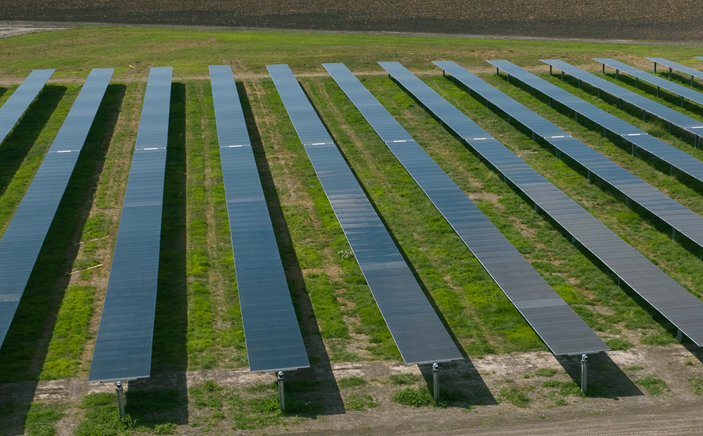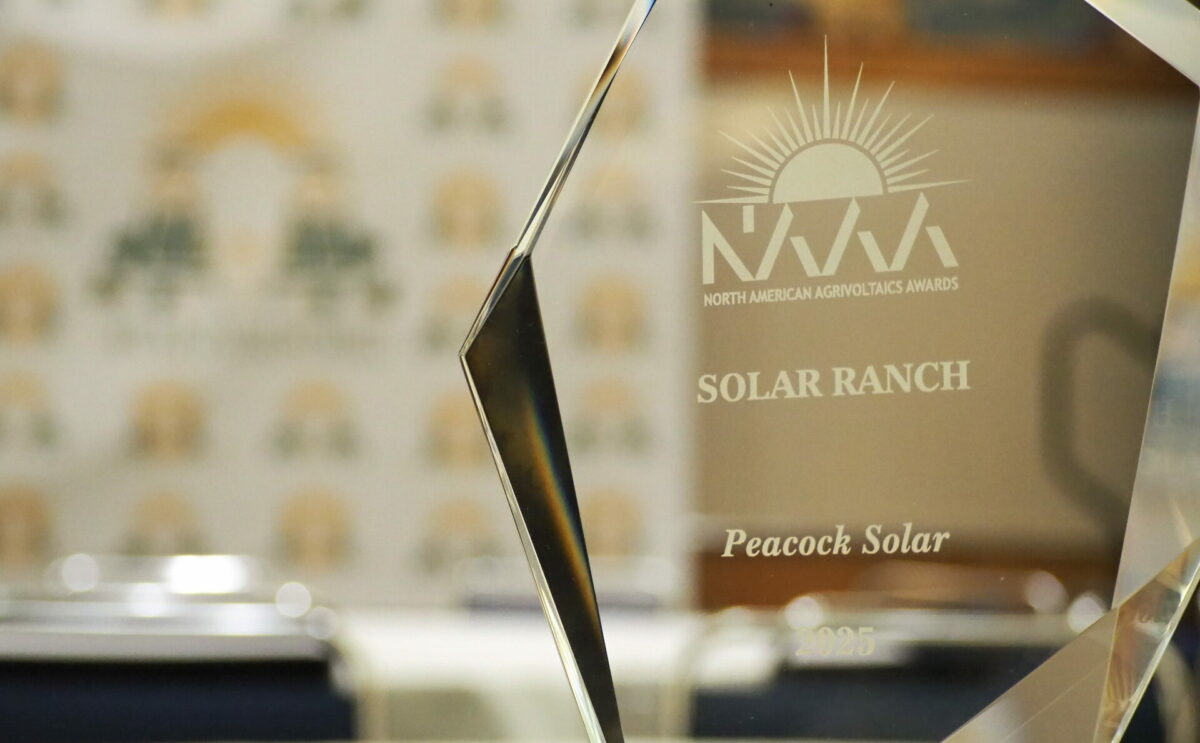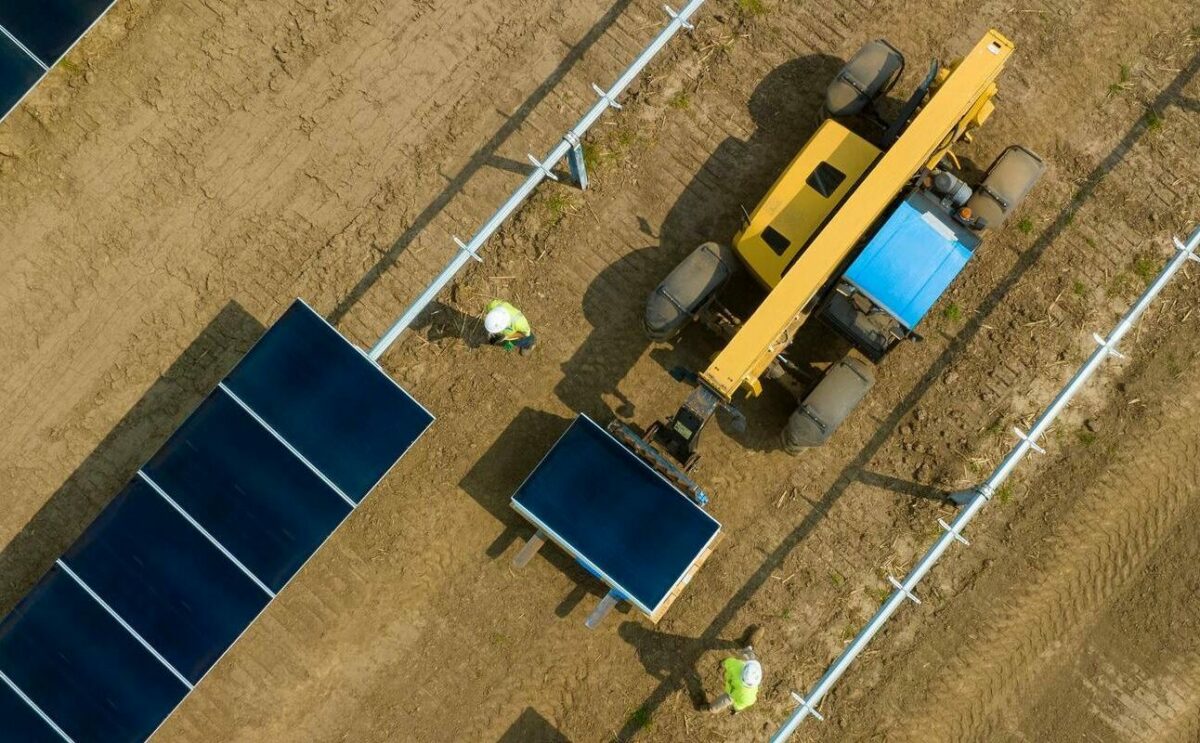The Responsible Solar Approach part 2: The energy transition
Second article in a series by Alyssa Edwards, Senior Vice President, Environmental Affairs and Government Relations:
The transition to clean energy is more urgent now than ever.
In my last piece, I laid the groundwork for a series on emerging best practices for utility scale solar power plants as a positive force in the communities they serve. Our industry is raising the bar for good as part of the energy transition.
Each post in this series will cover one of those best practices.
But before delving into all of that, it’s worth acknowledging the fundamental benefits of adding clean energy to the grid. We mustn’t lose sight of the fact that we are in a battle against a warming planet — and we are running out of time.
Solar is a major player in achieving our climate goals
Data from the Mauna Loa Observatory in Hawaii shows we are now past 420 parts per million (ppm) of carbon in the atmosphere, which is far above “safe” levels of 350 ppm. The quicker we decarbonize, the better. Every degree, even every tenth of a degree, of extra warming has consequences for the earth’s inhabitants now and into the future. Climate change is already costing us billions from disasters and extreme weather events.
The stakes could not be higher. Unabated, climate change yields a bleak future where droughts and wildfires become the new normal. Coastal cities face a combination of deadly heat, sea level rise and more intense hurricanes. Climate change threatens our health too, as warmer, wetter weather spreads tropical diseases like dengue or West Nile virus.
Meeting our energy needs with clean solar power displaces other forms of energy generation and reduces climate pollution. The U.S. Department of Energy (DOE) Solar Futures Study projects that by 2035, solar energy has the potential to power 40% of the nation’s electricity and drive deep decarbonization of the grid.
Solar is one of the lowest-cost sources of energy on the market today
Solar costs have declined dramatically — prices dropped 90% in the last decade. It’s the lowest cost form of energy today, and it’s taking off with lightning speed. According to American Clean Power, in 2021, utility-scale solar power was the third largest source of renewable energy in the country, generating enough energy to power 12.1 million homes.
Take a breath of fresh air from clean power
Another benefit of clean energy is clean air and clean water. Soot, particulate matter, smog, and other fossil pollutants reduce life expectancy, and foul our airways. A 2020 study in the journal Nature found that closing coal-fired power plants reduced asthma morbidity in the local community. My child has asthma, so I care about these issues not just globally, but on a personal level.
Reduced threats, more security and greater energy independence
Even the Pentagon has sounded the alarm citing climate change as a source of heightened armed conflicts, and mass migrations, referring to climate change as a “threat multiplier.”
As solar increases on the landscape, it’s important to understand that there are unique qualities to solar photovoltaic generation. Solar panels require no fuel, so there’s no chance for a spike in fuel costs, or a need to transport dirty fuels. Distributed solar systems produce power where it’s used, reducing transmission loss. And, unlike conventional power plants, solar panels do not need a constant source of water for operations.
Given the global conflicts underway, the transition to clean energy is what will help us gain real energy independence. The faster we move to clean, local sources of energy that diversify our power supply, the faster we reduce dependence on fossil fuels and create more local jobs. We will also reduce our country’s vulnerability to geopolitical crises and market volatility.
Here comes the sun
There are so many benefits to clean, low-cost solar power. Less pollution, fewer health problems, and a safer, more secure nation. Solar is one of the sharpest tools in our toolbox to reduce rising emissions and take on the climate crisis.
In my next article, I’ll explore soil quality and biodiversity enhancement measures, such as curated seed mixes, and other ways that solar developers can improve and protect the land below our solar panels.
As I wrap up, I want to acknowledge all our allies in the solar industry who are doing their part to clean up the grid, create jobs and build economic prosperity. I’m proud of the progress the solar industry is making and excited to see what the future brings.
This is the second piece in a series exploring how best practices in environmental and land management increase community acceptance and enhance the surrounding environment. In our next piece we’ll look more closely at soil health and biodiversity. Read it here.
Alyssa Edwards first published this article on LinkedIn in on May 3, 2022. To leave a comment or question, please view the original post here.
Discover Responsible Solar
Learn more about Responsible Solar
Related news
14 Oct, 2025
Lightsource bp and Pinnacle Financial Partners announce $97.9M tax equity deal for Peacock Solar
Lightsource bp and Pinnacle Financial Partners today announced the closing of a $97.9 million tax equity deal to finance the 187 MW Peacock Solar in San Patricio County, TX.
15 Aug, 2025
Lightsource bp wins two North American Agrivoltaics Awards
Lightsource bp proudly announces receipt of two North American Agrivoltaics Awards: Solar Ranch of the Year and Champion of the Year.
31 Jul, 2025
Solar Power World names Lightsource bp the top solar developer in the USA
Lightsource bp, a global leader in renewable energy development, has been named the United States’ #1 solar developer by Solar Power World.




